
Apart from Fairbanks Alaska, all 10 of the coldest cities in the United States are in the Midwest. The remaining nine positions are divided between Minnesota, South Dakota, North Dakota, and Michigan. The coldest place in Minnesota is the township of Embarrass. The average temperature throughout the year is 36.4 degrees, and the area is known to experience temperatures below -40 degrees Fahrenheit.
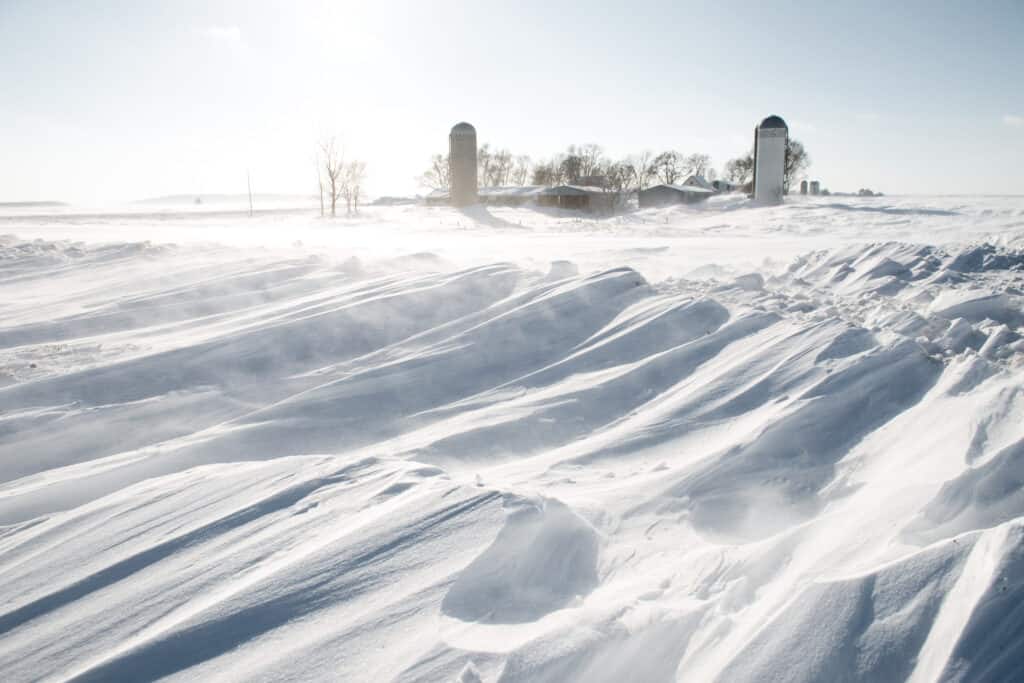
The average temperature is 36.4 degrees in the coldest place in Minnesota.
©Plume Photography/Shutterstock.com
If you were to ask every Minnesotan, though, most would tell you that their hometown is the coldest place in the state. Braving blisteringly cold temperatures is a point of pride in many frigid places, and rightly so. Still, Embarrass holds the trophy for Minnesota. Now, let’s discover the coldest place in Minnesota!
Embarrass: Minnesota’s Coldest Place
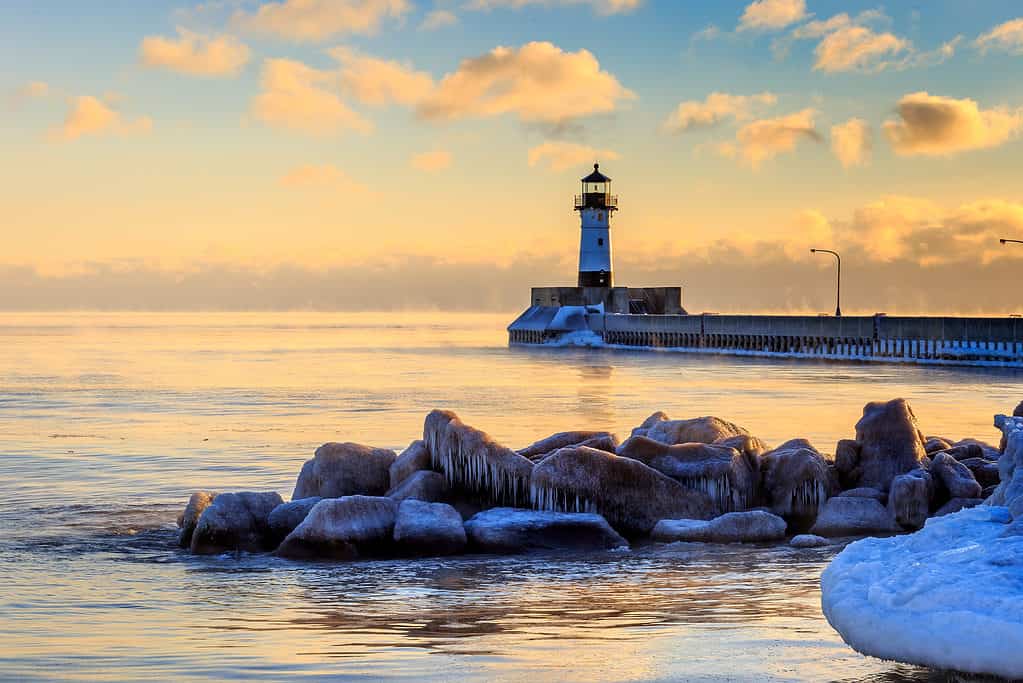
Staring out from the coast of Lake Superior, you would think you were gazing into the ocean
©Frank Kennedy MN/Shutterstock.com
Embarrass is a township toward the northern reaches of Minnesota’s borders. It’s a short drive from Canada’s southern border and just over an hour directly north of Duluth, MN.
The township wasn’t given its name because it was “Embarrassing” but rather because it was difficult to navigate when French traders first arrived there. The word “embarrass” in French is a verb meaning “to disrupt with challenges and obstacles.”
They gave the area this name because the river that passes through was particularly shallow and laden with natural obstacles making it difficult to sail through. The river was also aptly named the Embarrass River.
If those explorers had landed there in the wintertime, the temperature surely would have been one of the key obstacles. The unofficial coldest temperature in Embarrass was -64 degrees Fahrenheit in 1996.
That temperature is lower than Minnesota’s official low, which is -60 degrees in Tower, MN. The thermometer used in Embarrass was not verified by the National Weather Service, however, so the record isn’t recognized.
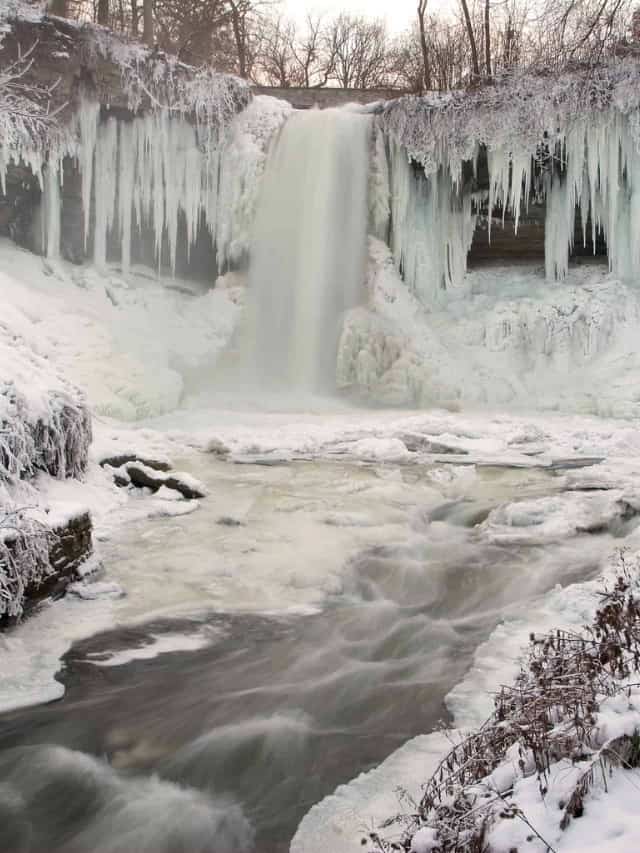
The Embarrass River froze during the coldest winter in Minnesota (1996).
©Karla Caspari/Shutterstock.com
Why Is Embarrass So Cold?
Embarrass is situated a little bit lower than the surrounding areas, and it’s nestled in a river valley. According to MPR News, the dense cold air runs down the valley and “pools in the town.”
Because colder air tends to sink, that means Embarrass is blessed with some absolutely frigid temperatures. It’s a significant valley as well, resting between the Laurentian Divide and the Vermillion Range.
Historically, Embarrass was a passageway for fur traders. The town’s river and geological placement would have made it a hotspot for individuals headed to and from Duluth.
The Biggest Blizzard In Minnesota History
The biggest blizzard in Minnesota history was the Armistice Day Blizzard (or the Armistice Day Storm) on November 11th and 12th, 1940. It hit an area of the Midwest that spanned a whopping 1,000 miles wide. This massive “panhandle hook” winter storm swept through from Kansas to Michigan.
On the morning of November 11th, 1940, temperatures in the Upper Midwest were quite high. By the afternoon, they had risen to 65 °F. As the day progressed, though, the weather changed drastically. There were reports of wind and rain, a tornado, and heavy snowfall. Temperatures dropped significantly and snow started to come down fast, making it the most severe blizzard ever witnessed in Minnesota.
The effects of the most extreme blizzard to ever hit Minnesota were felt throughout the midwest. The snowfall was monstrous, with up to 27 inches in Collegeville and 16 inches in the Twin Cities. Winds of 50 to 80 miles per hour created 20-foot drifts, while temperatures dropped a staggering 50°F. The storm lasted into the following day.
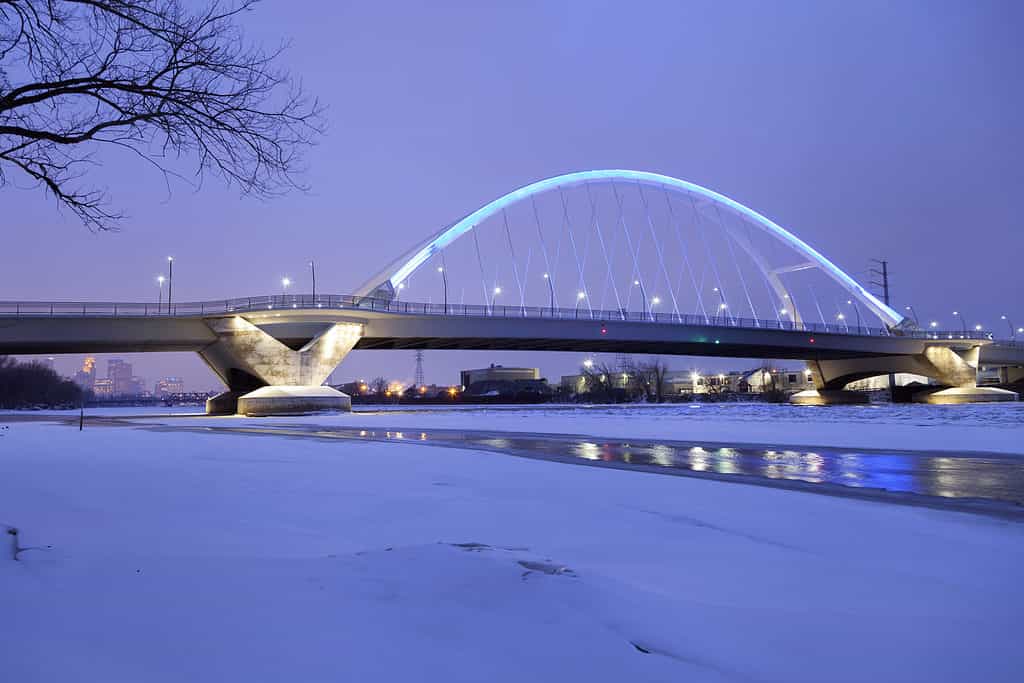
The biggest blizzard in Minnesota history was the Armistice Day Blizzard (or the Armistice Day Storm) on November 11th and 12th, 1940.
©Sam Wagner/Shutterstock.com
North Of An Early Trading Hub
Duluth is extremely cold in the winter as well, in part because it’s tucked on the coast of Lake Superior, which has the most surface area of any freshwater lake in the world. It has the third-most volume of any lake in that category as well.
Staring out from the coast of Lake Superior, you would think you were gazing into the ocean or a massive inland sea. The huge body of freshwater links up with the other great lakes which is why the Port of Duluth has long been an integral shipping hub for the state and the region.
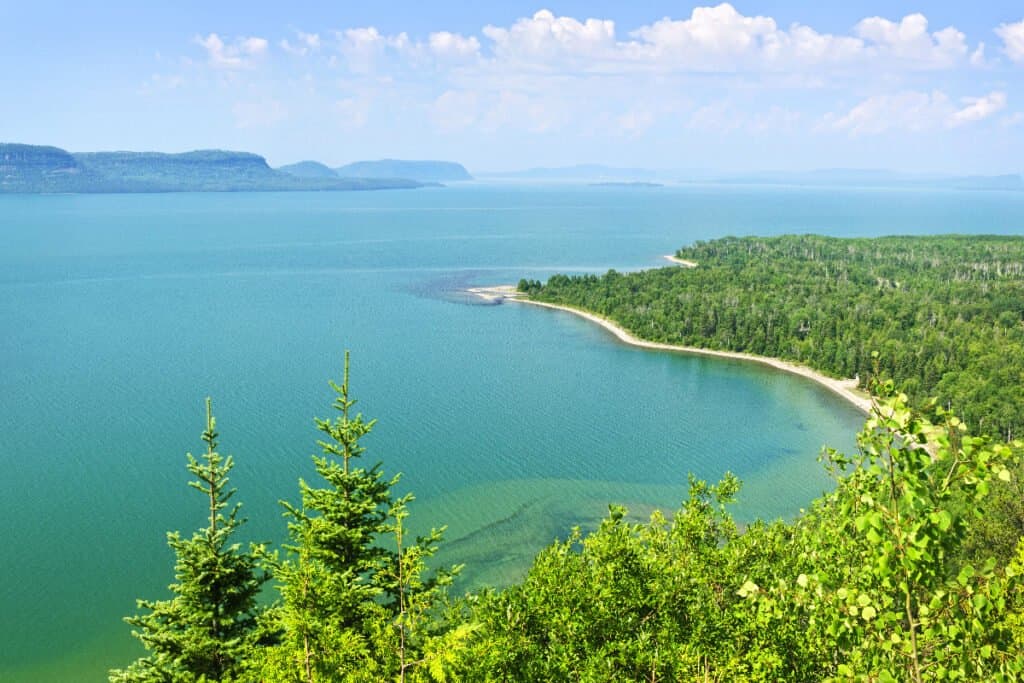
Lake Superior has 10% of the world’s surface fresh water
©Elena Elisseeva/Shutterstock.com
Before it was “Duluth”, the Ojibwe occupied the region, but when French explorers took an interest in the area’s wildlife, they firmly established it as a central point for trading.
Namely, the trading of pelts, skins, and beaver hats was incredibly lucrative in 1620 when French explorer Etienne Brule “discovered” Duluth.
Later on, French explorer Daniel Greysolon Sieur du Lhut explored the St. Louis River, which is the largest river running into Lake Superior. His last name is anglicized as “Duluth,” which is where the city gets its name. There’s another city in Georgia that shares the same name for the same reason.
From 1620 through 1854, the area of Duluth was a prominent trading hub for a variety of goods between people of numerous nationalities. Native American people were heavily involved in that process.
Rumors of copper mining, however, piqued the U.S. government’s interest in Duluth, prompting the 1854 Ojibwe Land Cession Treaty, which forcefully relocated many people to Grand Portage and Fond du Lac. Some members of the Lake Superior Chippewa tribe live there to this day.
Population And Culture
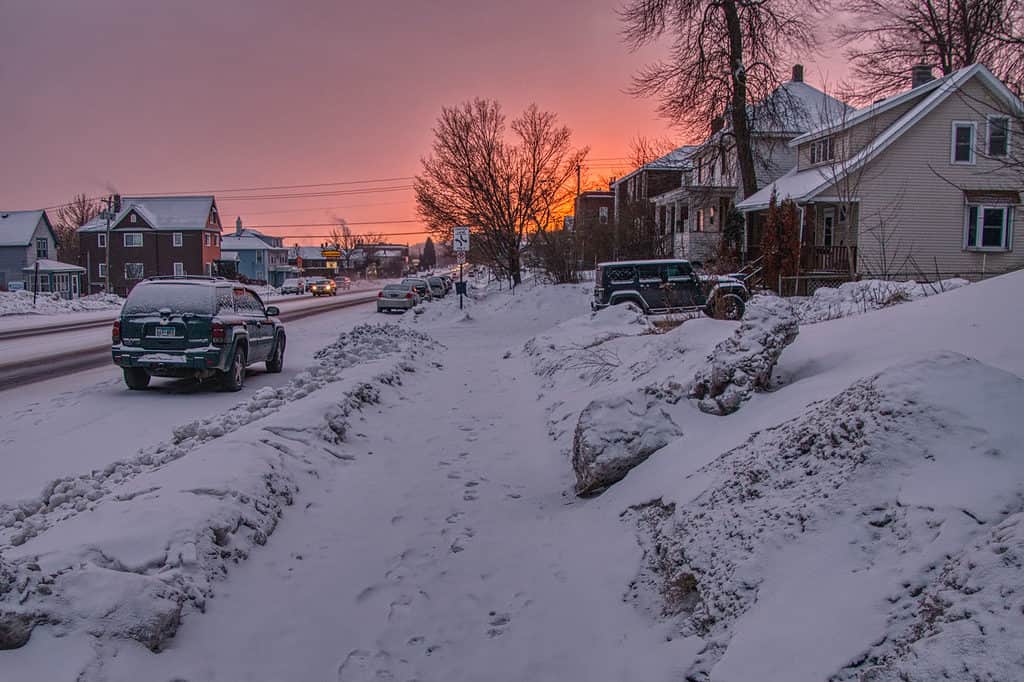
Despite being frigid in the wintertime, Embarrass and Duluth are beautiful places.
©Jacob Boosma/Shutterstock.com
Embarrass Township has a relatively small population, with the best estimates hovering below 1,000 people. Still, the town has thrived on the mining industry for the majority of its existence, and many residents still work in that industry today. While many residents commute out of town for work, the community strives to uplift and maintain its status as a great place to live.
The resident population of Duluth, however, hovers around 86,000 people. The University of Minnesota brings many students to the area, but natural beauty is the main draw for residents.
Despite being frigid in the wintertime, Duluth and Embarrass are truly beautiful places. The interplay between dynamic rock formations, crisp northern flora, and cool waters is hard to find anywhere else.
As a result, northern Minnesota is very popular in the summertime. Tourism is a big part of the local economy, but life still goes on when the snow starts to fall.
Some people, like the legendary “Ice Beard Surfer”, even take full advantage of the elements no matter the temperature. Duluth is a small industrial town much like Embarrass, just larger and nestled between the world’s largest freshwater lake and the pristine northern wilderness.
Wildlife In Northern Minnesota
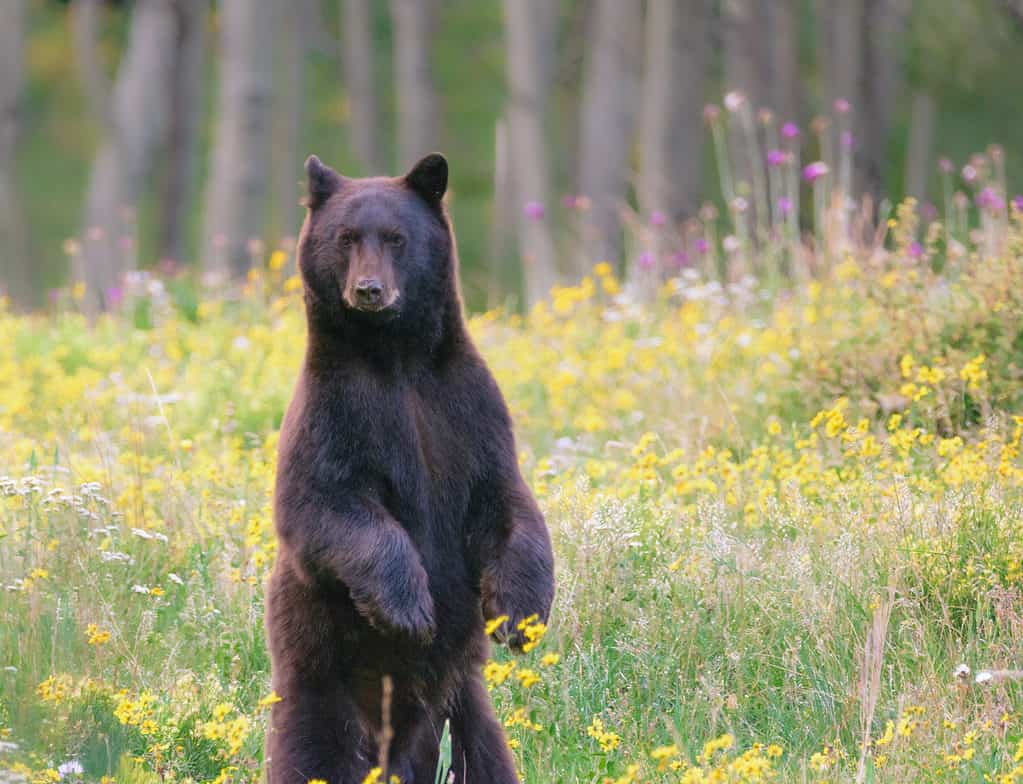
Quintessential Minnesotan animals include moose and black bears.
©Constance Mahoney/Shutterstock.com
Embarrass and Duluth are gifted with nearly all of the fantastic animals that call Minnesota home. You have the chance to see quintessential Minnesotan animals such as moose, black bears, wolverines, and wolves. It’s rare to see these wild animals, but you’ll almost definitely see a deer or two if you spend more than a few days up north.
You could also spot bobcats, or if you’re extremely vigilant, a mountain lion. Mountain lions are rare and elusive, but visitors spot them occasionally in northwestern Minnesota. The same is true for fishers, pine martens, and other critters that only live up north.

Bobcats can range from the size of a large housecat to a bit larger.
©Don Mammoser/Shutterstock.com
Lake Superior is home to a wide variety of fish as well. The most impressive fish in Lake Superior is the lake sturgeon. Lake sturgeon can grow to legendary sizes if they live long enough. Large adults look strikingly similar to sharks, and one 240-pound individual was over 100 years old. Females might live up to three times as long as males, reaching the age of 150 years in extreme cases.

Lake sturgeon is a stellar source of caviar.
©Kletr/Shutterstock.com
In conclusion, while it may be cold, Duluth is a complex and wonderful place.
The photo featured at the top of this post is © Mark Herreid/Shutterstock.com
Sources
- World Atlas, Available here: https://www.worldatlas.com/articles/10-coldest-us-cities.html
- MN Department of Natural Resources, Available here: https://www.dnr.state.mn.us/climate/journal/960202_60_below.html
- Time and Date, Available here: https://www.timeanddate.com/weather/usa/duluth/historic
- Minnesota Reformer, Available here: https://minnesotareformer.com/2020/02/13/the-dueling-realities-of-the-iron-range/
- US History, Available here: https://www.u-s-history.com/pages/h2126.html
Thank you for reading! Have some feedback for us? Contact the AZ Animals editorial team.






